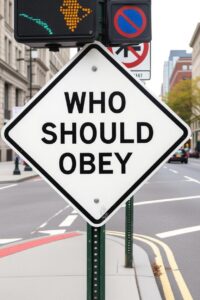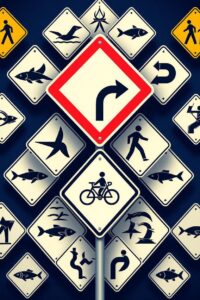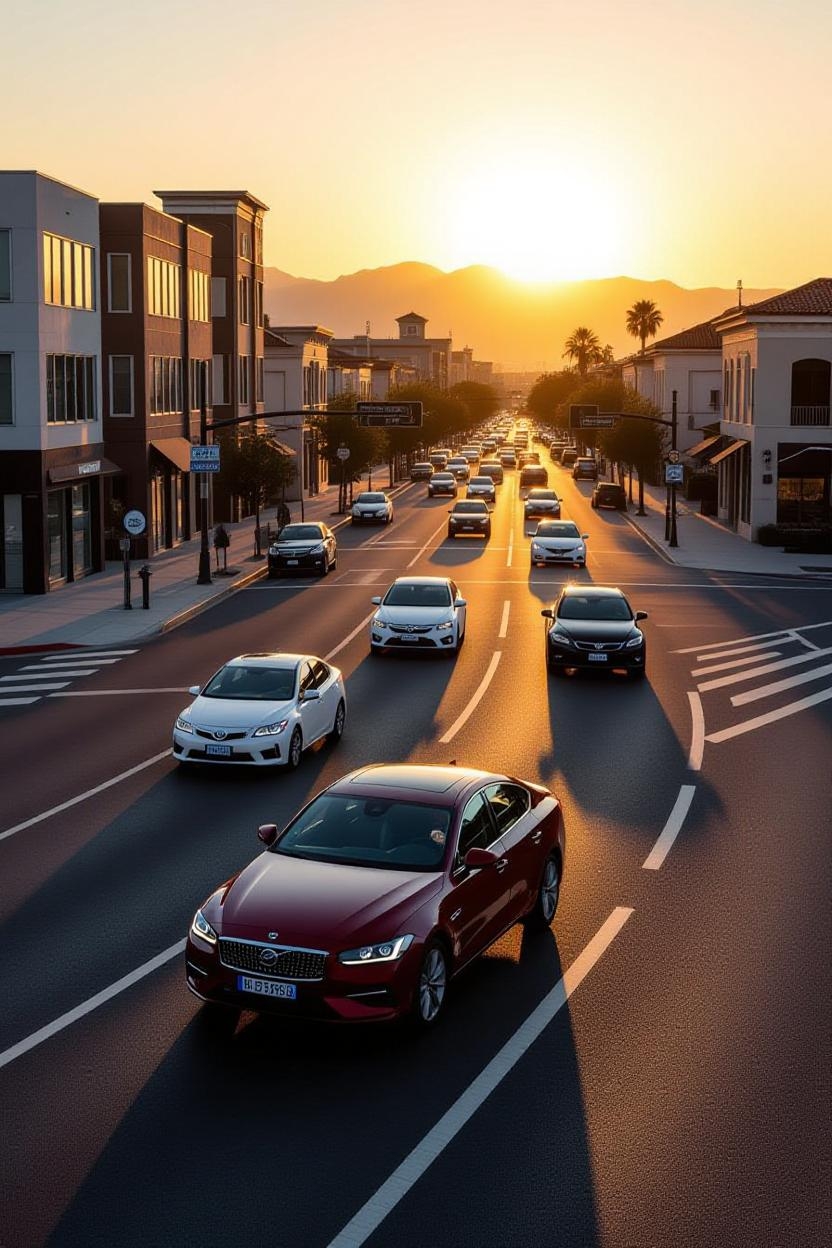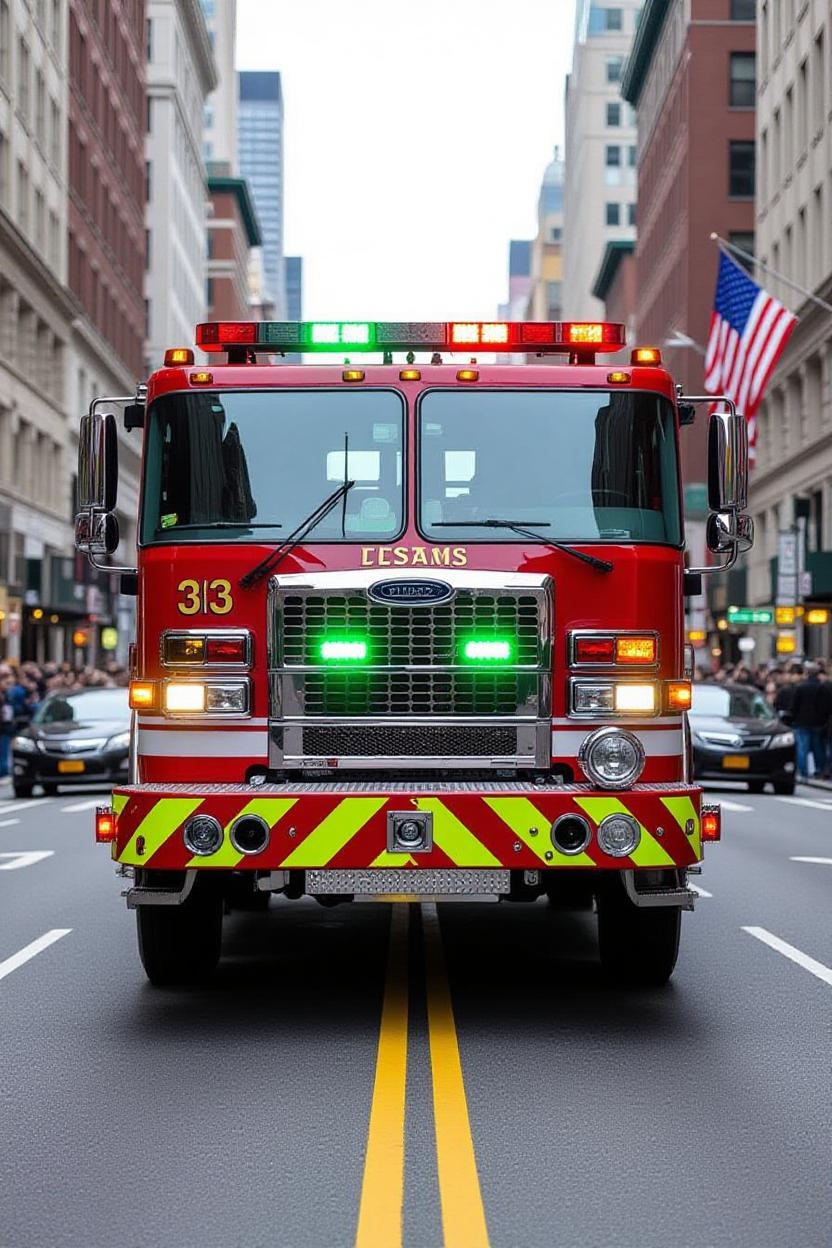Who Should Obey Diamond Shaped Traffic Signs
Theory question, who should obey diamond shaped traffic signs? Diamond-shaped traffic signs are not optional warnings — they are essential safety instructions that must be obeyed by everyone actively participating in traffic.
This includes motorists, cyclists, motorcyclists, commercial drivers, and even construction or utility workers operating vehicles in or near traffic zones.
While these signs are technically “warning signs” — alerting drivers to hazards like sharp curves, merging traffic, roadwork, or slippery surfaces — they still carry legal and practical weight. Ignoring them can lead to collisions, legal violations, or even fatalities. The theory question still remains, who should obey diamond shaped traffic signs? Let’s find out here!
List Of Those Who Should Obey Diamond Shaped Traffic Signs?
Here’s a breakdown of who must obey diamond shaped traffic signs and why it’s very necessary.

1. All Motor Vehicle Operators:
This includes drivers of cars, trucks, motorcycles, and buses. These signs signal conditions like sharp curves, pedestrian crossings, animal crossings, or road hazards (e.g., falling rocks, slippery surfaces).
Operators must respond by slowing down, increasing vigilance, or preparing to stop, depending on the specific warning.
For example, a diamond-shaped sign indicating a narrow bridge requires drivers to reduce speed and be ready to yield to oncoming traffic.
2. Bicyclists and Micromobility Users.
Bicyclist whether on roads or shared paths, must also heed these signs. A sign warning of a steep downgrade or a railroad crossing, for instance, requires cyclists to adjust speed or prepare to stop to avoid collisions or loss of control. Cyclists are particularly vulnerable, so compliance is critical for their safety.
3. Pedestrian
While pedestrians don’t “obey” traffic signs in the same way vehicles do, certain diamond-shaped signs, like those indicating pedestrian crossings or school zones, indirectly apply to them.
Pedestrians should be aware of these signs to understand where drivers are being warned to exercise caution, enhancing their own safety by staying alert in these zones.
4. Special Vehicle Operators
Operators of non-standard vehicles, such as agricultural machinery, construction equipment, or emergency vehicles, must also comply.
For example, a diamond-shaped sign warning of a low clearance ahead requires operators of tall vehicles to find alternate routes or risk damage.
5. Learner Drivers and Instructors
Those under instruction (e.g., with a learner’s permit) have a heightened responsibility to obey these signs, as they are still developing situational awareness.
Instructors must emphasize these signs during training, as they often indicate scenarios requiring quick decision-making.
6. Automated Vehicles
With the rise of autonomous driving systems, diamond-shaped traffic signs are critical for vehicle sensors and algorithms.
Programmers and fleet operators must ensure these systems are calibrated to recognize and respond to warnings, such as reducing speed at a “Crossroad” sign.
This is rarely discussed in standard traffic blogs, which focus on human drivers.
7. Road Maintenance Crews
Workers maintaining or repairing roads must also respect these signs, as they often indicate hazards like uneven pavement or temporary obstacles.
Their adherence ensures both their safety and that of passing traffic.
8. Cross-Border Drivers
In regions near international borders, drivers unfamiliar with local road systems may encounter diamond-shaped traffic signs with unique symbols (e.g., animal crossings specific to local wildlife).
These drivers must be particularly vigilant, as the signs may differ from their home country’s conventions.
Why You Must Obey Diamond Shaped Traffic Signs?
Unlike regulatory signs (e.g., stop or yield signs), diamond-shaped warning signs don’t always mandate a specific action but require proactive judgment.
Similar with some Urban clearway rules and regulations, ignoring these diamond shaped traffic signs can lead to accidents, legal liability, or citations if the failure to heed a warning contributes to a violation (e.g., speeding through a school zone marked by a diamond-shaped traffic sign).
The Manual on Uniform Traffic Control Devices (MUTCD) in the U.S. emphasizes their role in promoting safety, and their diamond shape is universally recognized in many countries, making them critical for global road safety.
List Of Diamond Shaped Traffic Signs You Should Obey.

These signs are typically yellow with black text or symbols (or reflective colors for visibility) and are designed to prompt drivers, cyclists, and others to adjust their behavior for safety.
List of Common Diamond-Shaped Traffic Signs
1. Curve Ahead
- Indicates a sharp curve in the road, requiring reduced speed.
- Symbol: Curved arrow (left or right).
2. Turn Ahead
- Warns of a sharp turn, sharper than a curve, often requiring a significant speed reduction.
- Symbol: Right-angle arrow (left or right).
3. Winding Road
- Signals a series of curves or turns ahead.
- Symbol: Multiple curved arrows in a sequence.
4. Intersection
- Alerts to a crossroad or side road where another road intersects the one being traveled.
- Symbol: Cross or T-shaped symbol.
5. T-Intersection
- Indicates the road ends at a perpendicular intersection with another road.
- Symbol: T-shaped symbol.
6. Y-Intersection
- Warns of a road splitting into two directions, forming a Y shape.
- Symbol: Y-shaped symbol.
7. Side Road
- Indicates a smaller road entering from the side.
- Symbol: Angled line joining a straight line.
8. Pedestrian Crossing
- Warns of a designated area where pedestrians may cross.
- Symbol: Figure of a person walking.
9. School Zone/School Crossing
- Alerts drivers to a school area or pedestrian crossing used by children.
- Symbol: Figures of children or a schoolhouse.
10. Bicycle Crossing
- Indicates a designated crossing for cyclists.
- Symbol: Bicycle icon.
11. Animal Crossing
- Warns of potential animal crossings (e.g., deer, cattle, or region-specific wildlife like moose or kangaroos).
- Symbol: Image of the specific animal.
12. Low Clearance
- Indicates a bridge or structure with limited overhead clearance.
- Symbol: Number indicating clearance height (e.g., 12’6”).
13. Narrow Bridge/Road
- Warns of a bridge or road section narrower than the current road.
- Symbol: Two arrows converging.
14. One-Lane Bridge
- Indicates a bridge ahead that only accommodates one direction of traffic at a time.
- Symbol: Single arrow or text.
15. Slippery When Wet
- Warns of a road surface that becomes slippery in wet conditions.
- Symbol: Skidding car icon.
16. Falling Rocks
- Alerts to the risk of rocks falling onto the road.
- Symbol: Rocks falling from a cliff.
17. Steep Grade/Hill
- Indicates a steep incline or decline ahead.
- Symbol: Vehicle on a sloped triangle, often with a percentage (e.g., 10% grade).
18. Railroad Crossing (Advance Warning)
- Warns of a railroad crossing ahead, not at the crossing itself.
- Symbol: Circular “RR” or crossbuck symbol.
19. Divided Highway Begins/Ends
- Signals the start or end of a divided road with a median.
- Symbol: Two arrows separating or converging.
20. Lane Ends/Merge
- Warns that a lane is ending, requiring merging into another lane.
- Symbol: Lane reduction diagram.
21. Added Lane
- Indicates an additional lane joining the main road without merging.
- Symbol: Lane addition diagram.
22. Crosswind
- Warns of strong side winds that could affect vehicle control.
- Symbol: Windsock or wind lines.
23. Soft Shoulder
- Alerts to an unstable or soft road shoulder.
- Symbol: Vehicle tilting on shoulder.
24. Uneven Pavement
- Indicates bumps, dips, or uneven road surfaces.
- Symbol: Vehicle on uneven lines.
25. No Passing Zone (Advance Warning)
- Warns of an upcoming section where passing is prohibited.
- Symbol: Two vehicles with a red circle and slash.
26. Emergency Vehicle Crossing
- Indicates a crossing for emergency vehicles (e.g., fire trucks).
- Symbol: Emergency vehicle icon.
27. Traffic Signals Ahead
- Warns of upcoming traffic lights.
- Symbol: Traffic light icon.
28. Stop/Yield Ahead
- Alerts to a stop or yield sign ahead.
- Symbol: Stop or yield sign icon.
29. Speed Hump/Bump
- Warns of speed humps or bumps on the road.
- Symbol: Hump or bump diagram.
30. Construction/Work Zone Warning
- Indicates road work or construction hazards ahead.
- Symbol: Construction equipment or worker icon.
31. Flood Area
- Warns of a road prone to flooding.
- Symbol: Water over road icon.
32. Advisory Speed
- Suggests a safe speed for a hazard (e.g., curve or turn).
- Symbol: Number (e.g., 25 MPH) on a smaller rectangular plaque below the main sign.
33. Dead End/No Outlet
- Warns that the road does not connect to another road.
- Symbol: Text or road-ending diagram.
34. Playground
- Indicates a playground area where children may be present.
- Symbol: Children playing icon.
35. Equestrian Crossing
- Warns of horse riders or horse-drawn vehicles crossing.
- Symbol: Horse and rider icon.
This list covers the most common diamond-shaped traffic signs you should obey but is not exhaustive, as local jurisdictions may introduce unique signs for specific hazards.
All road users—drivers, cyclists, and even pedestrians in relevant contexts—should remain vigilant and adjust their behavior based on these warnings to ensure safety.
Summary
In summary, diamond-shaped traffic signs demand attention from a wide range of road users—drivers, cyclists, and even pedestrians or workers in specific contexts.
Their warnings require not just obedience but situational awareness and adaptability, ensuring safety in dynamic road environments.


